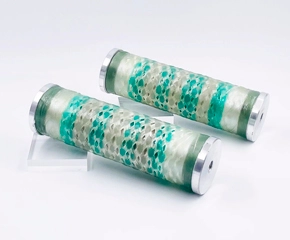Surge arresters for high-speed railways and DC traction systems require MOVs to have high mechanical strength and adapt to various complex operating conditions.
TGE, the metal oxide varistor manufacturer can provide special MOVs with high strength, high weather resistance, and strong DC polarity reversal aging ability, providing a strong heart for high-speed rail and DC traction system arresters.
Metal oxide varistors (MOVs) are used to protect speed rail and DC train systems from high-voltage surges. MOVs are designed to absorb and dissipate electrical energy, such as a surge, and redirect it away from the system they're protecting. This helps to prevent damage to the system and increases its safety and reliability. MOVs are typically placed near the power source, and they can protect against both AC and DC power surges. MOVs can also be used to protect components of the system such as motors, switches, and relays, as well as the infrastructure itself, such as the tracks and power lines.




Welcome to TGE's Customer Connect Center. Experienced specialists are here for you 365 days a year.
No.53, Hong Guang Road, He Ping Industrial Park, San Qiao, Xi'an, China.